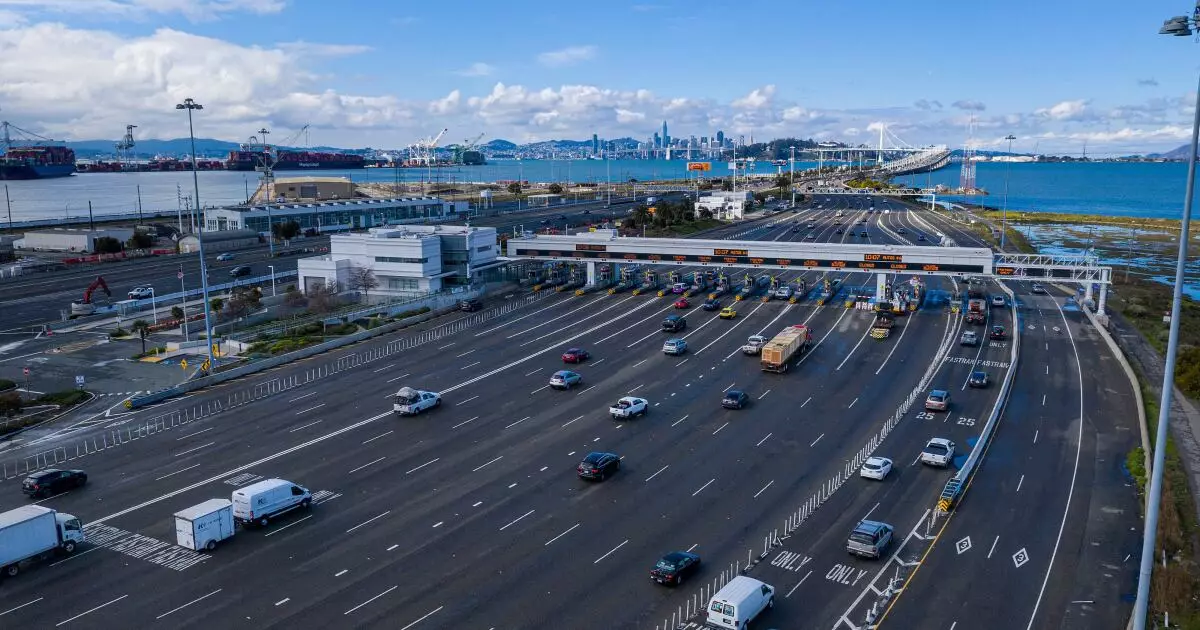In an age where traditional transportation funding mechanisms are faltering, a remarkable two-thirds of U.S. states have introduced or are considering new transportation funding bills this year. The gas tax, once a reliable source for infrastructure funding, has become increasingly inadequate due to the growing popularity of electric vehicles and fuel-efficient cars. With the American Road and Transportation Builders Association’s recent report revealing that 37 states have proposed a staggering total of 130 bills, it’s evident that state-level officials are searching high and low for sustainable revenue streams.
Critically, this isn’t just a mundane display of legislative activity; it’s indicative of a systemic failure in our transportation funding model. As vehicles that rely less on gasoline proliferate, the associated tax revenue is plummeting. It is essential for state lawmakers to recognize that sticking to outdated funding mechanisms will only exacerbate the existing transportation crises, leading to crumbling infrastructure and, ultimately, a public safety nightmare.
Controversial Measure: Tolls on Interstates
The Indiana General Assembly has taken a bold leap forward by passing a controversial bill allowing the implementation of tolls on all interstate highways. This is a significant step that underscores the pressing debate surrounding user fees versus general fund allocations for transportation. State Rep. Jim Pressel, a Republican and the bill’s sponsor, encapsulates a growing sentiment: “You pay for what you use.” This perspective champions the principle that infrastructure funding should correlate closely with usage, a notion that aligns with center-right values emphasizing personal responsibility and market-driven solutions.
The fiscal implications are staggering. The bill’s analysis suggests that Indiana could generate approximately $38.2 billion in revenue over a two-decade span should the tolling policy be enacted. This raises serious questions about whether we should pivot towards a more user-fee driven system, allowing states to take matters into their own hands instead of continuing to lean heavily on federal funding, which is often bogged down in political maneuvering.
Inconsistencies in Legislative Approaches
While initiatives like Indiana’s tolling scheme are explored, there is a notable disarray in how states approach transportation funding. For instance, Maryland’s recent legislation aims to inject $500 million into transportation through various new taxes and fees. However, such a move risks alienating citizens who are increasingly burdened by rising costs of living. Is a piecemeal approach that leans heavily on increased taxation really what the infrastructure demands right now? What about the pressing need for efficiency and innovation in funding mechanisms?
In contrast, North Carolina’s proposal for local governments to issue bonds against anticipated state transportation revenues reflects a creative but fraught solution that begs for comprehensive oversight. While there’s ingenuity in expecting local governments to lead the charge on transportation funding, we must ask whether these jurisdictions possess the required administrative capabilities and financial literacy to effectively manage such ambitious undertakings.
Electric Vehicle Fees: The Future of Transportation Funding
One revelation emerging from these discussions is the pivot towards creating new fees targeted at electric vehicle owners—a demographic that inherently benefits from existing infrastructure but does not contribute to its upkeep. About 14% of the bills introduced in various states aim to establish electric vehicle fees, while an additional 11% propose road usage charges. This is nothing short of necessary.
Failure to charge electric vehicle owners risks accelerating the ideological divide between traditional car owners and those transiting to newer technologies. The proposed Fair Share Act—a Republican-led bill in Congress—can serve as a benchmark for setting a standard for national legislation aimed at rectifying this imbalance. By equitably distributing the financial responsibilities of our nation’s road upkeep, we can forge a transportation system that thrives on fairness and sustainability.
Revamping the Status Quo
Ultimately, what we see unfolding is not merely a battle for funding but a holistic re-evaluation of how we perceive and manage our transportation system at every level. The disjointed efforts of various states reveal an urgent call for a paradigm shift in infrastructure funding—one that values innovative solutions over antiquated beliefs.
The future of our roads, bridges, and overall infrastructure may very well hinge on embracing these evolving concepts. As states contemporary with the technological revolution adapt their funding methods, Americans will have to grapple with that transition, questioning not only how funds are acquired but how they are utilized. A more user-based, equitable approach to transportation funding could be the key to securing our infrastructure for generations to come.

